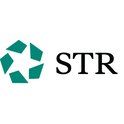Holiday Weekend Lifts US Hotels, But Performance Still Lags 2019
Occupancy Surpasses Levels Achieved During Memorial Day, Labor Day Weeks
U.S. hotel occupancy for the three-day Columbus Day holiday weekend was lower than it was in 2019, and despite achieving higher weekend rates this year, hotel revenue per available room comparisons to 2019 declined.
Still, the holiday propelled occupancy to 65% for the week ending Oct. 16, which was the country’s highest since mid-August and surpassed the levels achieved during the weeks of Memorial Day and Labor Day. It also marked the 11th week since June that occupancy reached or surpassed 65%.
For the three-day weekend, occupancy was 72%, compared to 75% in 2019. Weekend occupancy ranged from 95% in Gatlinburg/Pigeon Forge, Tennessee, to 52% in Oahu, Hawaii. Overall, 58% of all STR-defined markets reported occupancy above 70% during the holiday weekend.
Hotel demand after the holiday was much lower given nascent business travel and limited conferences. On average, demand was 85% of 2019 levels in the days after Columbus Day, increasing to 99% of 2019’s volume by the weekend.
Both weekly demand and occupancy indexed to 2019 fell for a second consecutive week and were 10% below the levels achieved in the comparable week of 2019.
Overall, weekly average daily rate indexed below 2019 levels for the first time in three weeks with real ADR — adjusted for inflation — 7% below 2019. However, during the holiday weekend, ADR was 8% higher than it was over the 2019 Columbus Day holiday weekend, with real ADR 2% higher.
Revenue per available room on a total-room-inventory basis, which accounts for temporarily closed hotel rooms, was 86% of what it was during the same week in 2019. The RevPAR index to 2019 fell from 90% the previous week.
Even with the decrease, STR’s Market Recovery Monitor showed TRI RevPAR in the “recovery” category, with an index to 2019 between 80% and 100%, for a 19th consecutive week. On a 28-day moving average, TRI RevPAR was 88% of what it was in 2019, down slightly from the previous week.
Weekly Performance Highlights
Despite trailing 2019 levels, U.S. hotel RevPAR increased 1.1% week over week, in line with a weekly rise in hotel demand and occupancy that was driven by the holiday weekend.
The week-over-week demand gain came almost entirely from Sunday with other weekdays providing much less improvement. Weekend occupancy declined for the second time in the past three weeks but remained strong at 78%, which was the second highest of the past 11 weeks. U.S. total-room-inventory occupancy was 62.8% as 44,000 rooms remain temporarily closed.
For the full week, U.S. markets that gained hotel demand included Washington, D.C., and Orlando. The biggest demand declines during week were reported in Colorado, Albuquerque and Chicago.
New York City occupancy increased by 1.6 percentage points to 67%. Midweek demand, Tuesday through Thursday, was the second highest in the city since the start of the pandemic, with occupancy at 63%. Weekend demand for the city was also its second highest of the pandemic-era, behind only the Friday and Saturday of the Columbus Day holiday weekend (79%).
Across the U.S., 66% of hotels reported weekly occupancy above 60%. Midweek occupancy was 61%, which was the highest level of the past eight weeks as 58% of hotels had occupancy above 60% during those days. Weekend occupancy fell to 78% from 79% in the previous week, with 84% of hotels reporting occupancy above 60%. Over the past two weeks of reporting, more than 40% of hotels had weekend occupancy at or above 90%, which last occurred during July.
Not surprising given the holiday, group demand fell during the week, but the week-over-week decrease was only 1.3% for Tuesday through Thursday. Midweek group demand for luxury and upper-upscale hotels has been above 400,000 in three of the past four weeks, including the past two.
While demand was on the rise week over week, average daily rate stepped back 0.5% — the second decline of the past three weeks. This week’s decrease was due entirely to a 3.6% decline on the weekend, as weekday ADR was up 2%, mostly from growth on Sunday of the holiday weekend.
Weekday ADR in the top 25 markets increased 3.1% for the week, compared to a 1.1% increase in all other markets. Weekend ADR decreased by roughly the same amount for both market types.
About STR
STR provides premium data benchmarking, analytics and marketplace insights for the global hospitality industry. Founded in 1985, STR maintains a presence in 15 countries with a corporate North American headquarters in Hendersonville, Tennessee, an international headquarters in London, and an Asia Pacific headquarters in Singapore. STR was acquired in October 2019 by CoStar Group, Inc. (NASDAQ: CSGP), the leading provider of commercial real estate information, analytics and online marketplaces. For more information, please visit str.com and costargroup.com.








